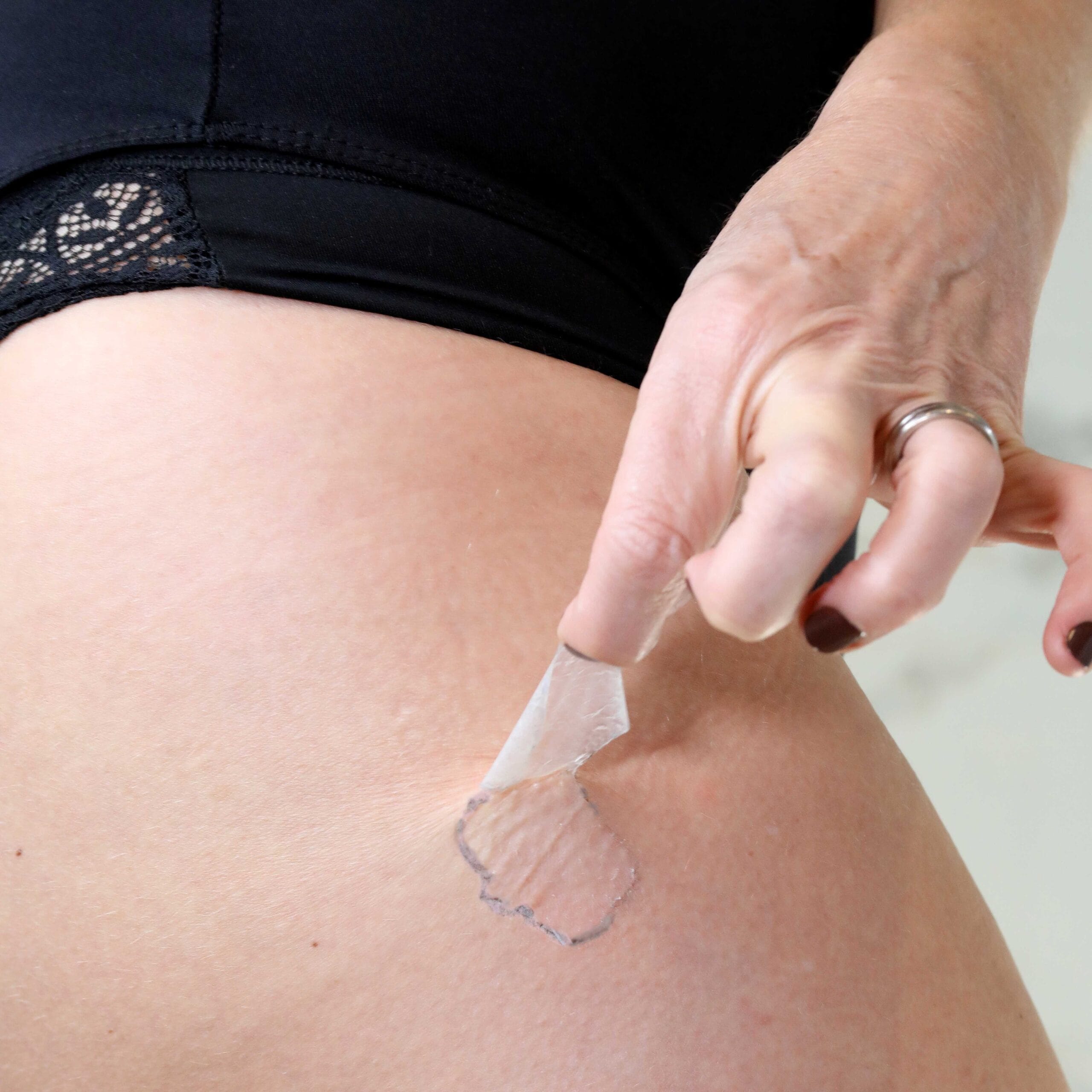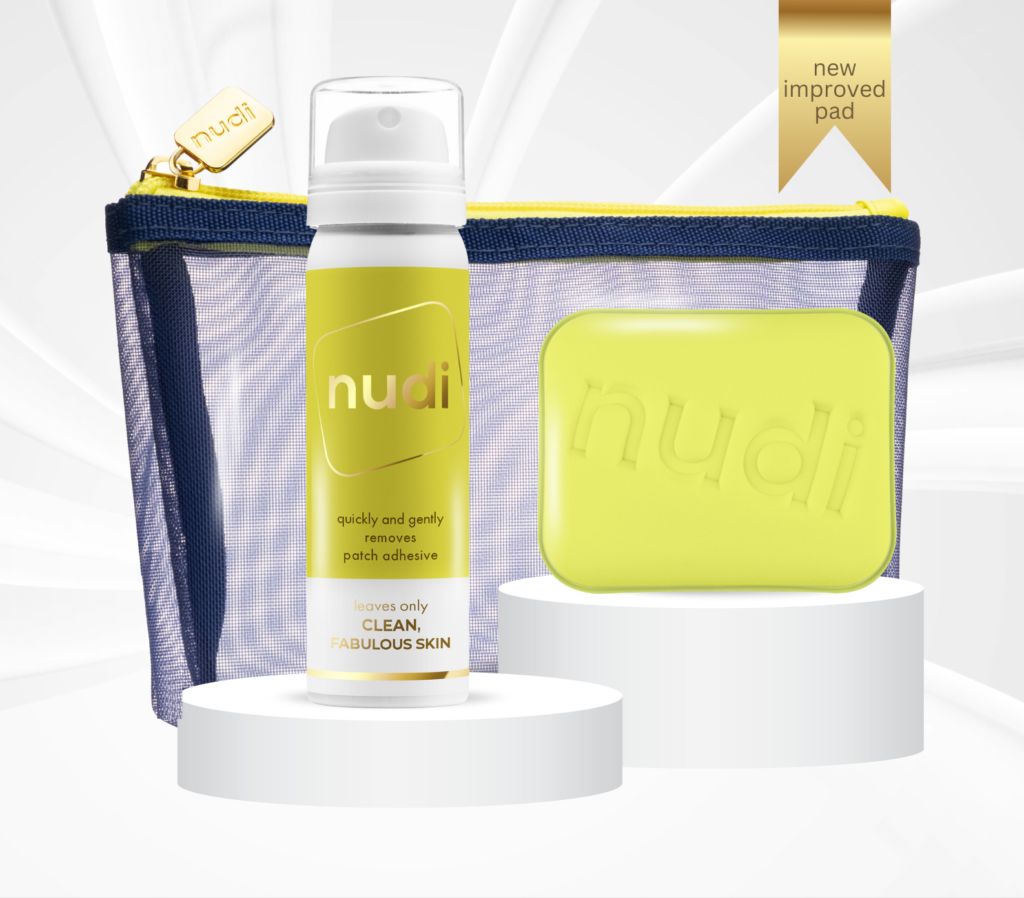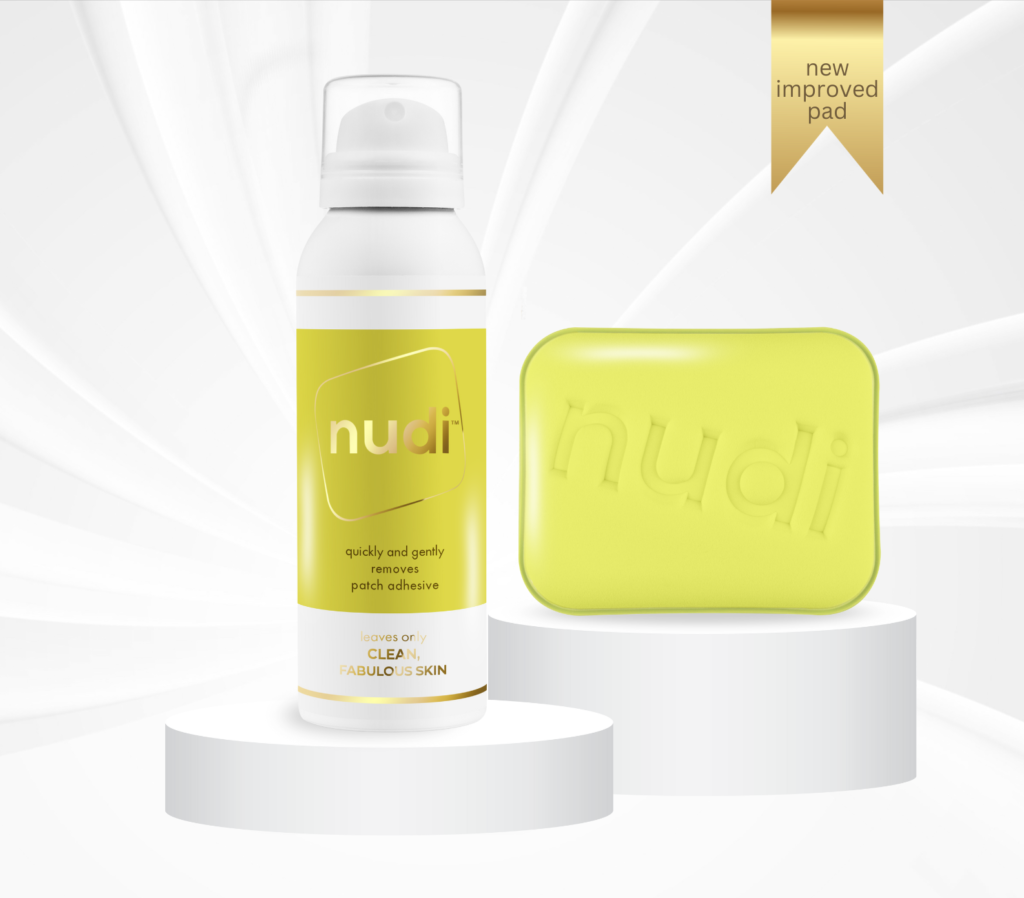
Menopause can bring a wide range of symptoms, from hot flushes to mood swings, that significantly impact daily life. Oestrogen patches have become a popular choice for hormone replacement therapy (HRT) due to their convenience and consistent hormone delivery. However, while these patches offer significant benefits, understanding their potential side effects is crucial for making an informed decision about menopause treatment. This blog explores oestrogen patches, their benefits, common side effects, and practical tips for managing adhesive residue to ensure a comfortable and effective HRT experience.
What Are Oestrogen Patches?
Oestrogen patches are a form of transdermal oestrogen therapy, where small amounts of the hormone are delivered directly into the bloodstream through the skin. These patches are typically applied to clean, dry areas of the lower abdomen or buttocks and are changed every few days, depending on the type prescribed.
Compared to other types of HRT, such as pills or creams, oestrogen patches provide several advantages:
- Consistent Hormone Delivery: The patch ensures steady absorption of oestrogen, reducing the likelihood of sudden hormonal fluctuations.
- Ease of Use: Applying a patch is quick and requires minimal effort.
- Lower Risk of Side Effects: Since the hormone bypasses the digestive system, patches are less likely to cause stomach upset or liver strain compared to oral tablets.
By offering a non-invasive, easy-to-use solution for menopause symptoms, oestrogen patches have become a go-to choice for many women looking to regain balance and comfort during this transitional stage of life.
Why Use Oestrogen Patches?
Oestrogen patches are particularly effective at alleviating menopausal symptoms, which can be both physically and emotionally challenging. Common benefits include:
Relief from Menopausal Symptoms
Oestrogen patches help reduce classic symptoms of menopause, such as:
- Hot Flushes: Sudden feelings of heat, often accompanied by sweating and discomfort, are significantly reduced.
- Mood Swings: By stabilising hormone levels, patches can improve emotional well-being.
- Vaginal Dryness: Oestrogen helps maintain the health of vaginal tissues, reducing discomfort and improving overall quality of life.
Improving Sleep and Energy Levels
Many women experience sleep disturbances during menopause, which can lead to fatigue and low energy levels. By balancing hormone levels, oestrogen patches can contribute to more restorative sleep and better daytime energy.
Long-Term Health Benefits
Oestrogen therapy also offers protective benefits, such as:
- Reduced Risk of Osteoporosis: By maintaining bone density, oestrogen patches can help prevent fractures in postmenopausal women.
- Improved Cardiovascular Health: Studies suggest that transdermal oestrogen may have a lower risk of blood clots compared to oral HRT, potentially benefiting heart health.
- Potential Cognitive Benefits: Emerging research indicates that oestrogen therapy may help preserve cognitive function in some women, though more studies are needed to confirm these effects.
These benefits make oestrogen patches a versatile and impactful option for menopause treatment, offering both immediate relief and long-term health advantages.
Common Side Effects of Oestrogen Patches
Like any medical treatment, oestrogen patches come with potential side effects. While many women tolerate them well, understanding these effects can help users manage them effectively.
Skin Irritation and Adhesive Sensitivity
One of the most common complaints about HRT patches is skin irritation caused by the adhesive. Symptoms can include redness, itchiness, or a rash at the application site. For some women, adhesive sensitivity may worsen over time if not addressed.
Tips to Minimise Skin Irritation:
- Rotate Patch Locations: Avoid applying the patch to the same spot repeatedly to give the skin time to recover.
- Clean and Dry Skin: Ensure the application area is free of lotions or oils that can interfere with adhesion.
- Use Nudi Spray for Residue Removal: A gentle, dermatologically tested adhesive remover like Nudi Spray can prevent irritation caused by scrubbing or harsh cleaning methods.
Hormonal Side Effects
Adjusting to oestrogen therapy may cause side effects such as:
- Nausea: This is often temporary and can improve as the body adjusts to the hormone levels.
- Breast Tenderness: Mild discomfort is common but should be monitored if it persists.
- Headaches: Fluctuations in hormone levels may lead to headaches in some women.
- Weight Changes: Some women report minor weight fluctuations during HRT. While not universal, it’s a side effect to be aware of.
If these symptoms persist or worsen, it’s essential to consult your healthcare provider. Adjusting the dosage or switching to a different type of HRT may help.
Serious but Rare Side Effects
Although uncommon, some serious risks are associated with oestrogen patches. These include:
- Blood Clots: Transdermal oestrogen has a lower risk compared to oral HRT, but the possibility still exists.
- Stroke or Certain Cancers: Long-term use of HRT may slightly increase the risk of breast or endometrial cancer.
- Allergic Reactions: Severe allergic reactions to the adhesive or hormone are rare but possible.
Regular medical check-ups and discussions with your doctor can help monitor and reduce these risks. Always report any unusual symptoms, such as leg swelling, chest pain, or severe headaches, immediately.
Managing Adhesive Residue and Skin Care
While oestrogen patches are convenient, adhesive residue left behind after removal can be frustrating. Proper skin care is essential to maintain comfort and prevent irritation.
The Problem with Adhesive Residue
Adhesive from patches can accumulate on the skin, leading to discomfort and potential irritation. Sticky residue not only feels unpleasant but can also make it harder to reapply patches effectively. Over time, residue buildup can interfere with the patch’s adhesion, reducing its effectiveness.
Tips for Effective Adhesive Removal
- Warm Water and Gentle Cleansing: Start by washing the area with warm water and mild soap.
- Use Skin-Friendly Products: Nudi Spray is a highly recommended option for removing adhesive residue. Its dermatologically tested formula ensures effective removal without harming sensitive skin.
- Avoid Harsh Scrubbing: Scrubbing can irritate the skin further, especially if it’s already sensitive from patch use.
- Pat Skin Dry: After cleaning, gently pat the skin dry before applying a new patch to ensure optimal adhesion.
Preventing Skin Irritation
- Patch Rotation: Regularly change the application site to prevent irritation.
- Hydration and moisturisation: Keeping your skin hydrated will improve its resilience and reduce the likelihood of irritation. Moisturised skin will improve absorption of oestrogen through the skin barrier but should not be applied directly to the site where the patch is being applied as this will prevent a strong bond with the skin.
- Test Adhesive Sensitivity: If irritation persists, speak with your doctor about trying patches with a different adhesive formula. It has also been suggested that histamine spray can be applied to a site before applying a patch to reduce irritation. A medical professional should be consulted about this.
How Nudi Spray Supports HRT Users
Nudi Spray is designed specifically for HRT users. Its gentle formula:
- Effectively removes adhesive residue without causing irritation.
- Promotes healthy skin by eliminating the need for harsh scrubbing.
- Simplifies the HRT experience, making adhesive removal quick and stress-free.
- Enhances comfort and ensures clean, residue-free skin for optimal patch adhesion.
Frequently Asked Questions About Oestrogen Patches
Q: What Are the Most Common Side Effects of Oestrogen Patches?
A: Common side effects include mild skin irritation, nausea, breast tenderness, and occasional headaches. Most of these symptoms improve as the body adjusts to the therapy
Q: Can I Switch Patches if I Experience Side Effects?
A: Yes. If side effects persist, speak with your doctor about trying a different brand or type of patch. They can recommend alternatives based on your specific needs.
Q. How Do I Prevent Skin Irritation from Patches?
A: Rotating application sites, using products like Nudi Spray for residue removal, and keeping the skin clean and dry can help prevent irritation.
Q: What Is the Best Way to Remove Adhesive Residue?
A: Gentle methods, such as using warm water and skin-friendly adhesive removers like Nudi Spray, are ideal. Avoid scrubbing or using harsh chemicals.
Q: Is Nudi Spray Safe for Daily Use?
A: Yes, Nudi Spray is dermatologically tested and safe for regular use. Its gentle formula is suitable for sensitive skin.
Conclusion
Oestrogen patches are an effective and convenient option for managing menopausal symptoms. They offer significant benefits, from reducing hot flushes and mood swings to protecting long-term health by lowering the risk of osteoporosis. However, like any treatment, they come with potential side effects, including skin irritation and hormonal changes.
Proper skin care and the use of supportive products like Nudi Spray can enhance the HRT experience by addressing common challenges such as adhesive residue and irritation. By working closely with your healthcare provider and maintaining a consistent skin care routine, you can enjoy the benefits of oestrogen patches while minimising discomfort.
Managing menopause doesn’t have to be daunting. With the right tools, knowledge, and support, you can navigate this life stage confidently and comfortably, improving both your health and overall well-being.
Our Products

Adhesive Remover Starter Kit
Designed to remove the most stubborn patch or tape glue from all skin types in a neat travel sized pack .
- Nudi Spray™ 50ml
- Easi Pad™
- Nudi™ Patch Bag
£15

Glue Free Forever!
Subscribe & Save
Enjoy our great value subscription direct to your door without giving glue another thought.
- Nudi Spray™ 100ml
- Easi Pad™
- Cancel anytime
£16

Top Up!
Designed to remove the most stubborn patch or tape glue from all skin types in our larger 100ml can.
- Best Seller
- Nudi Spray™ 100ml
- Easi Pad™
